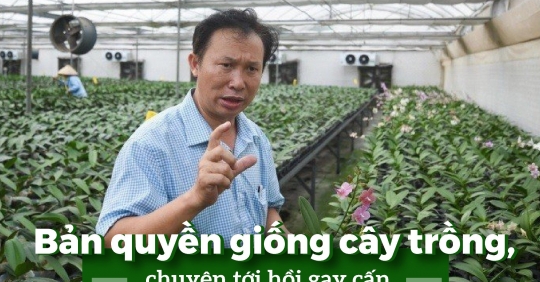It is not required to protect copyright.
Dang Van Dong, deputy director of the Fruit and Vegetable Research Institute (Vietnam Academy of Agricultural Sciences), said, “Registration of copyright protection for plant varieties is very important, especially for research institutes such as the Fruit and Vegetable Research Institute. At present, the Fruit and Vegetable Research Institute also has a number of fruit tree varieties such as mango, longan and a number of flower varieties that have been approved for production and are developing very well. In 2023 – 2024, the Fruit and Vegetable Research Institute will continue to register a number of other types of vegetables and flowers for marketing.
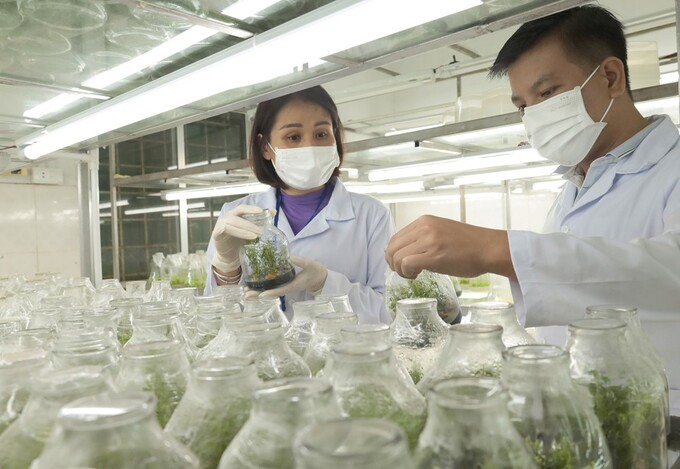
The registration of copyright protection is very important for research institutes. Picture: tsp.
dr Dong explained: For most plant varieties produced by cloning methods, it has long been difficult to protect copyrights. However, once the copyright has been registered, there is no need for the author or the copyright agency to keep it for themselves. Because if you want the strain to be brought into production and replicated quickly, the author and author agency should first accept a partial disadvantage. The breeder and breeder agency only need to sign up for copyright protection to certify that the strain was created by themselves and is the true “owner” of the strain, so if there were any future problems, it would be very easy to get that variety back .
“I don’t know about other entities, but at the Fruit and Vegetable Research Institute, when you create varieties, you always decide
The decision does not keep the monopoly for itself, but creates favorable conditions for its exploitation and widespread use by the people. As more people use the breed, the prestige, value, and brand of the strain, author, and agency that created the breed has been validated.
In parallel, of course, the Institute continues to register breed copyrights to confirm its position as a breeder. At a certain point, when people are familiar with the breed, they will streamline management and find companies to collaborate on transmission,” Mr Dong said.
Money you have but dare not spend
According to Mr. Dong, the biggest problem in enforcing seed copyrights at the moment is the pricing of scientific research products and the distribution of profits. In particular, according to the provisions of the Intellectual Property Code, it is possible for the holder of the PBR certificate to assign the rights to the created plant variety to subjects who wish to transfer it, or transfer it in the form of a contract text.
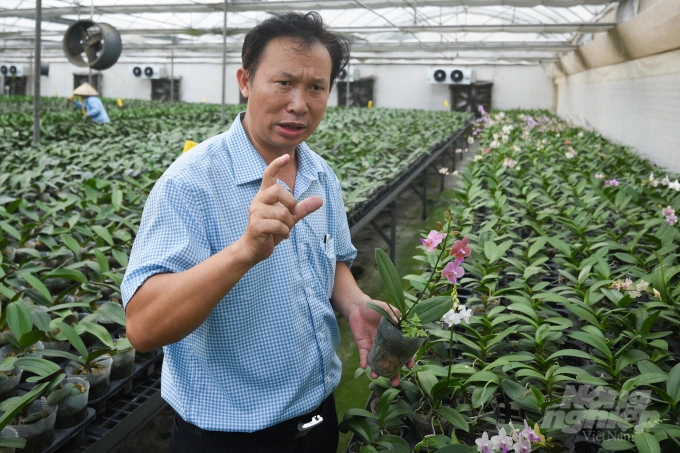
dr Dang Van Dong said that the plant variety copyright evaluation stage for research institutes still has many difficulties. Picture: Life.
In addition, the transfer of rights to plant varieties from the state budget must comply with the provisions of the Technology Transfer Act (2017). As a basis for evaluating scientific and technological products, the Circular for Determining the Value of Assets is the result of scientific and technological tasks using state capital promulgated by the Ministry of Finance.
However, the methods for determining the property value are not realistic, so the implementation is still cumbersome and timid. When the inspection body controls the movement and transfer of plant varieties, the question repeatedly arises for research institutes as to whether plant varieties are created with the state budget.
Countries through research projects, they are considered national assets. So what is the basis for seed owners (research institutes) to determine the transfer price for plant variety copyrights? Why are some varieties valued at high transfer prices while other varieties are priced low?
“Generally it’s okay not to transmit race and then it’s okay to transmit and sometimes break the law like gambling. Not too far away, the Institute of Vegetables and Fruits recently transferred Da Lat 2 varieties of flowers, the money has been raised, but due to very cumbersome procedures, the institute still keeps “cover mats” in the treasury without using reinvestment. The main reason is that these varieties were created through a scientific research project using the state budget, while the basis for the product prices is unclear,” said Mr. Dong.
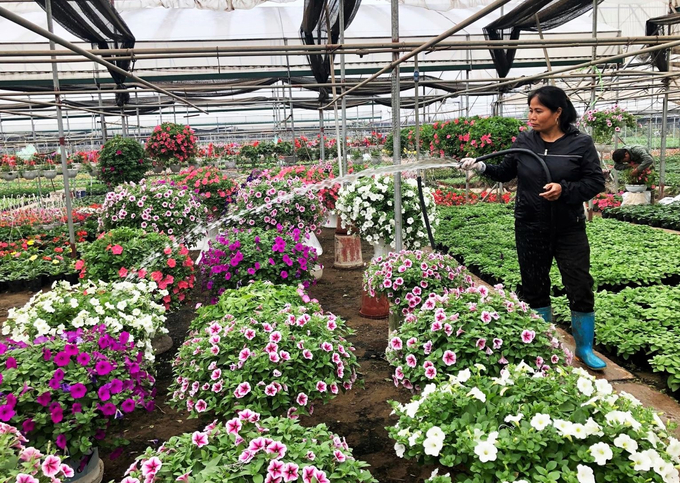
The regulations on the pricing of scientific research products are unclear, which makes transfer difficult for research institutes. Picture: tsp.
According to Mr. Dong, the important factor in accurately determining the product price is still the business side, the purchaser. The requirements and procedures are complete, but the company refuses to accept the order. Their companies are closest to the market when looking for copyright assignment of a plant variety, tightly grasping the ability, prospect and level of commercialization of the variety to determine the seed copyright price. So if they want to transfer, they must be consistent with their interests.
However, regulations on the pricing of scientific research products follow the same pattern, making it difficult for breed owners. Sometimes the breeder has to explain the case up and down, like why a research project with an investment of 4 billion VND to create a strain, but when the transfer is only 500 million dong?
It is still difficult to increase revenues for research institutes
According to Assoc. Prof. Dr. Dang Van Dong, there are many opinions that research institutes face many difficulties due to limited funding sources for scientific and technological research activities. Therefore, instead of institutes, when they create a variety and transfer that variety to companies, they should keep and develop their own products and trade seeds to increase their income and reinvest in their activities.
In reality, however, it is very difficult for a research institute to successfully commercialize a product. Because the resources that the institutes have in all aspects are not sufficient to survive in the market, e.g. with a financial system that supports them so that their competitiveness in advertising, product sales prices, market dominance … is always superior.
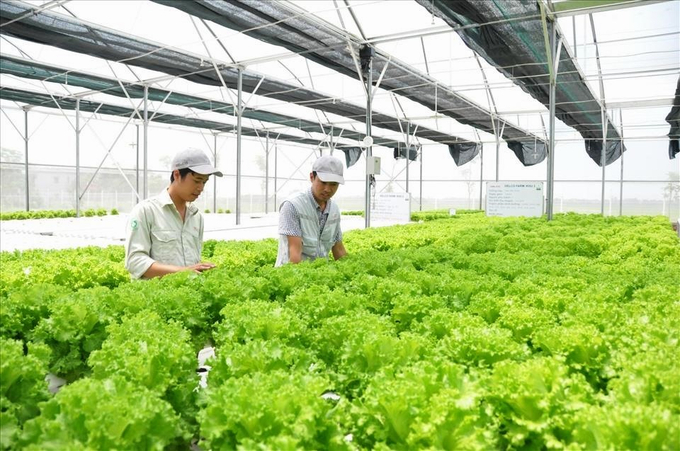
Due to limited resources, it will be difficult for research institutes to set up their own business and trade seeds. Picture: tsp.
dr Vuong Huy Minh, deputy director of the NGO Research Institute, shared the same view on the matter, saying that while the prospects for production and business development are very good for many varieties of plants produced by research institutes, if a company can Do production and business functions are located in a non-business unit, it is very inappropriate because it is tied to the management mechanism.
For example, companies that want to be successful must be autonomous in all aspects, must have a proper recruitment and salary mechanism to attract the best people to work, to stimulate production and shop staff. Business efforts to work, develop production, expand markets, develop effective products, have suitable and flexible cooperation mechanisms for partners…
However, if the enterprise is part of a non-corporate entity, the mechanisms for hiring, salary payment, promotion, etc. cannot be applied in this way. Therefore, in the end, the research unit within the business unit is appropriate.
The establishment of centers among research institutes with production and business functions is a model adopted by many entities, but is not easy to achieve. After all, the center with the task of production and business is no different from a miniature enterprise with an autonomous mechanism, its own seal and account …
Therefore, if you build a center under the institute and use only the institute’s available staff, it will only stop at the level of completing the task, even having to compensate for the loss of costs, and it is very difficult to be autonomous due to the lack of opportunity to recruit experienced , highly qualified…

